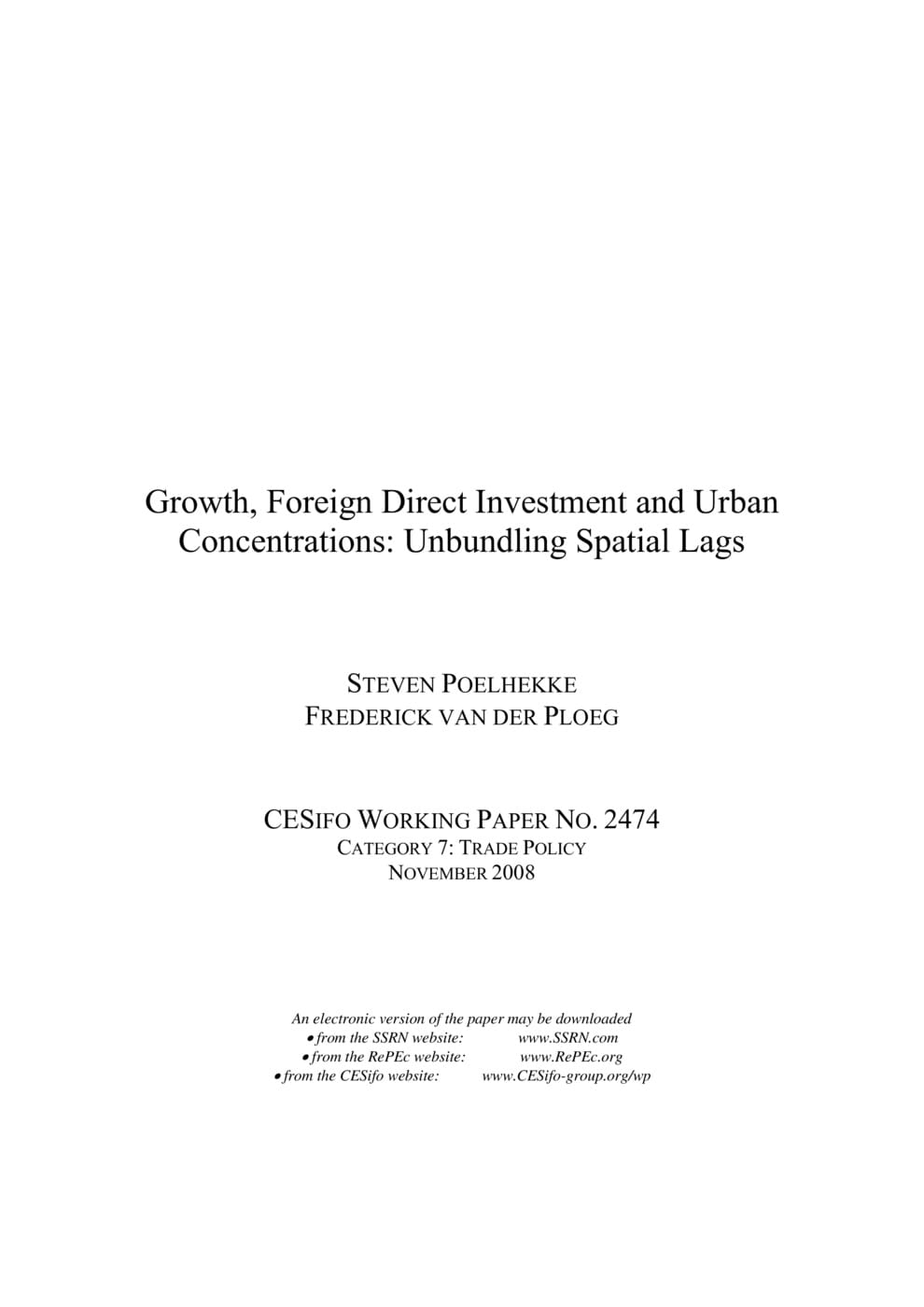Growth, Foreign Direct Investment and Urban Concentrations: Unbundling Spatial Lags
CESifo, Munich, 2008
CESifo Working Paper No. 2474

Cross-country regressions suggest that urbanization and FDI are important drivers of growth. However, it is not clear that primacy eventually hurts growth performance. Since it is tough to interpret cross-country growth regressions, we provide detailed evidence on the determinants of outward FDI from the US. FDI is higher in countries that are close to the US and have good institutions, well developed financial systems, a high road density, a high income per capita and substantial natural resource exports. Countries also attract more FDI if they have more medium-sized cities and primacy is not too large. We show that good institutions in neighbouring countries are important drivers of FDI. FDI is higher if neighbours suffer from primacy. However, FDI is attracted if surrounding countries have fewer cities, restrictions on international trade and low market potential (income per capita). We tentatively conclude that cities are important drivers of FDI and growth and unbundling spatial lags matters. Robustness is verified by re-estimating our regressions with fixed effects and for the sample of OECD countries.
Trade Policy